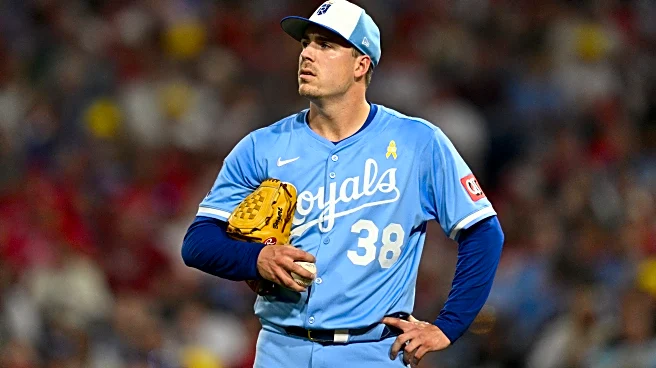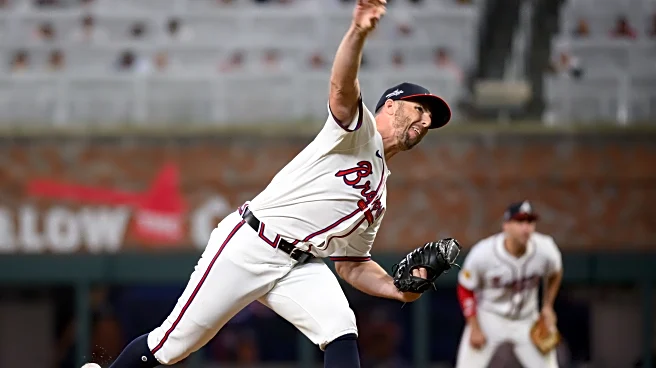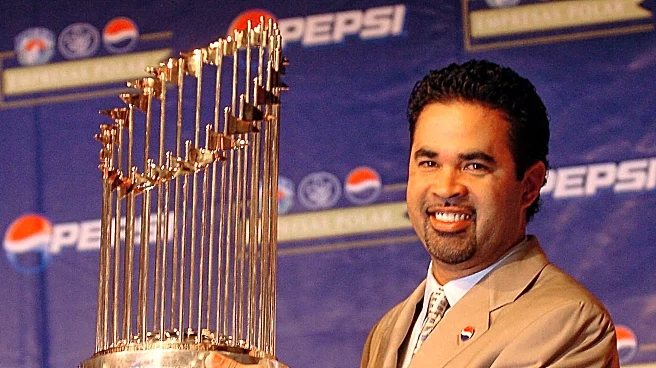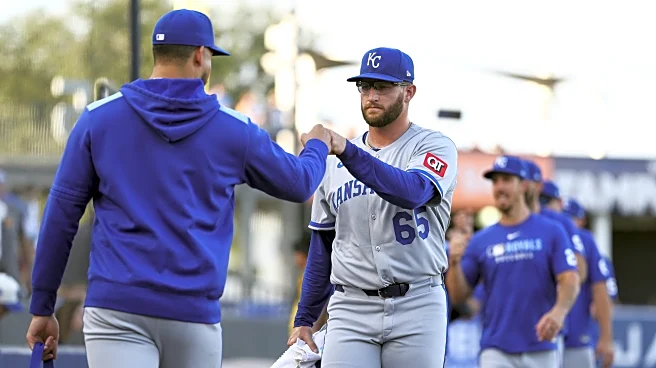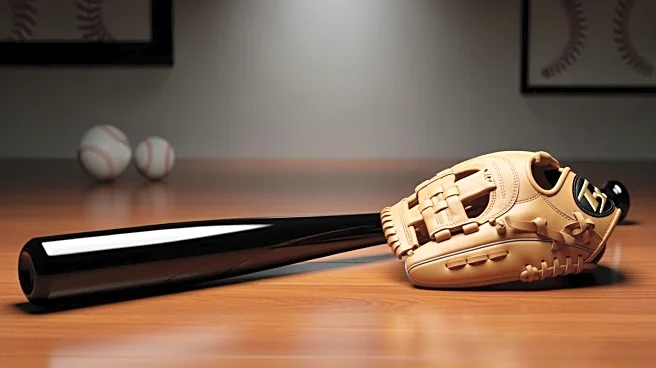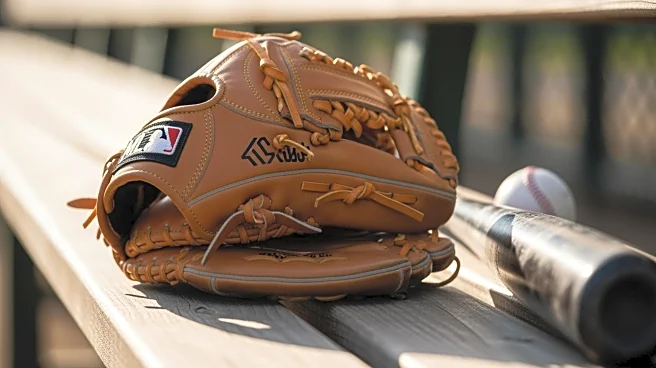Ryan Bergert didn’t spend a ton of time with Kansas City in 2025, he only made eight starts for Kansas City after they acquired him at the trade deadline alongside Stephen Kolek (review for him coming
soon!) for fan-favorite backup catcher Freddy Fermin. And, if you just looked at the raw numbers, you might not be all that impressed by him. After all, he finished the season with a perfectly adequate, but not spectacular, 3.66 ERA, thanks to a 4.43 ERA with Kansas City.
But what became clear shortly after his final start of the season at Philadelphia is that he was hurt in his final two starts – that one and the one against Cleveland that pretty much killed the Royals’ slim September playoff hopes. So I’m going to focus on his first six starts with the Royals, instead. In those starts, he had a much cleaner 2.43 ERA and a three-to-one K/BB ratio. In his final two, it was more like one-to-one. And, perhaps most interestingly, with San Diego, it was still only two-to-one.
At this point, it’s become old hat to Royals fans that pitchers who come to Kansas City will almost always improve from how they were pitching before that. That’s an absolutely wild thing to think; I don’t think it’s something we could have ever imagined before Cole Ragans joined the team in the middle of 2023. But now it’s become commonplace.
So, how did Ryan Bergert get better with Kansas City? Well, the biggest thing is that strikeout-walk ratio mentioned above. Which he pretty much did solely by walking fewer guys. His strikeout rate is pretty stable in all three samples, but when he was both healthy and pitching for KC, he walked about one guy less per nine innings. And that turned him into a stud who allowed only nine earned runs across six starts. It’s true he struggled to get deep into games; he only got 18 outs once, but the Royals were in the thick of a playoff hunt and seemed unwilling to let any of their starters pitch through trouble the third time through the order. Also, by the time he got to KC, he was already rapidly approaching the number of innings he had thrown in 2024, so it’s entirely possible they didn’t want him to blow too far past that number in case they needed him in the playoffs. He threw 98 innings in 2024; between El Paso, San Diego, and Kansas City, he ended up throwing 121 innings in 2025. So I wouldn’t be at all surprised if they ask him to do more in 2026.*
*Yes, he had a terrible injury scare with forearm tightness at the end of 2025, which is often a precursor to Tommy John surgery. But hopefully they identified it soon enough to avoid that. Per Anne Rogers, he began a throwing program in November and is expected to be fully healthy for the start of 2026.
But how did he improve his walk rate without sacrificing his strikeouts? Well, that’s where a terrific tool like Thomas Nestico’s pitching summary comparison app can really come in handy. So let’s take a look at that, shall we?

What’s particularly great about these sample sizes is how similar in size they are to each other. As you can see, he threw 615 pitches for the Padres and 697 for the Royals. So it makes it really obvious how different some things are. The end results are what matter, and his zone%, chase%, and whiff% all went up once he got to Kansas City.
The first, and probably most interesting thing, is how dang good his sweeper is. It was a great pitch in San Diego, and a great pitch in Kansas City. So the Royals’ pitching coaches did what was perhaps the most obvious thing: they had him throw it twice as often as he had in San Diego. What is perhaps less obvious is what pitch he was throwing less often because he was throwing his sweeper. Your first inclination might be to assume it was the slider, because the two pitches swap places in those graphs, but if you look at the count or pitch percentage, you can see he only threw slightly fewer sliders. What he threw far less of was his fastball.
Now, his fastball grades as an above-average pitch, mostly due to its well-above-average induced vertical break (iVB). We’ve talked about that before; it’s a key pitching statistic in the current era. But for those unfamiliar, it’s basically how much more or less the pitch moves due to spin than would be expected if it had none. A positive number means the pitch remains higher above the ground than would have been expected, giving it the appearance of rising, while a negative number indicates it dives closer to the ground. Bergert’s iVB ranks tied for 27th among all MLB pitchers on Baseball Savant in rising action. The velocity, as indicated by the blue in the table, is certainly not elite. But hitters get under it more than they expect to, which can lead to pop-ups when its thrown well, but also lets it get hit a long way when hitters catch it right.
The sweeper is a whole different beast, though. While the fastball rates as a good pitch, it doesn’t get a lot of chase or swing-and-miss. The sweeper gets both of those things. Plus, with the Royals, he started being able to steal strikes with it, throwing it in the zone more than half the time. But the fun doesn’t stop there, because the increased sweeper usage – and an increase in its break that we’ll get to in a moment – seems to have occurred at the same time as a massive improvement in his changeup. It’s unclear whether the changeup improved due to the increased sweeper usage, or if someone with the Royals helped him improve it independent of the sweeper, but it went from a pitch that was rated as well-below-average to an average-rated pitch that gets a ton of whiffs. More than two out of every five swings against his changeup completely missed it. That’s a ridiculously high rate!
OK, let’s look at how the movement of his pitches changed while we’re here. This is another graph from that same app.

Again, the sweeper and changeup really stand out here. The sweeper gained a fair bit of glove-side horizontal break, along with a bit more depth. The changeup got far more consistent with its movement and you can see that while he lost a bit of armside run, he gained even more drop to the pitch. If we refer back to the first table, we can see its actually dropping about four more inches than before, on average, while losing less than an inch of run. You can see the arm angle and spin rates are largely unchanged, but he dropped the sweeper’s velocity by two miles per hour, which allowed it to travel further and appears to have better thrown off hitter timing because they went from tattooing it when they got a hold of it in San Diego, to barely doing anything with it even when they could make contact in Kansas City.
Ryan Bergert stands as a testament to what the Royals’ pitching coaches can do. But he also stands as a testament to his own talent. And again, he was a 25-year-old rookie in 2025. The Royals have him under control, in the prime of his career, for years going forward. What could be more exciting than that?
